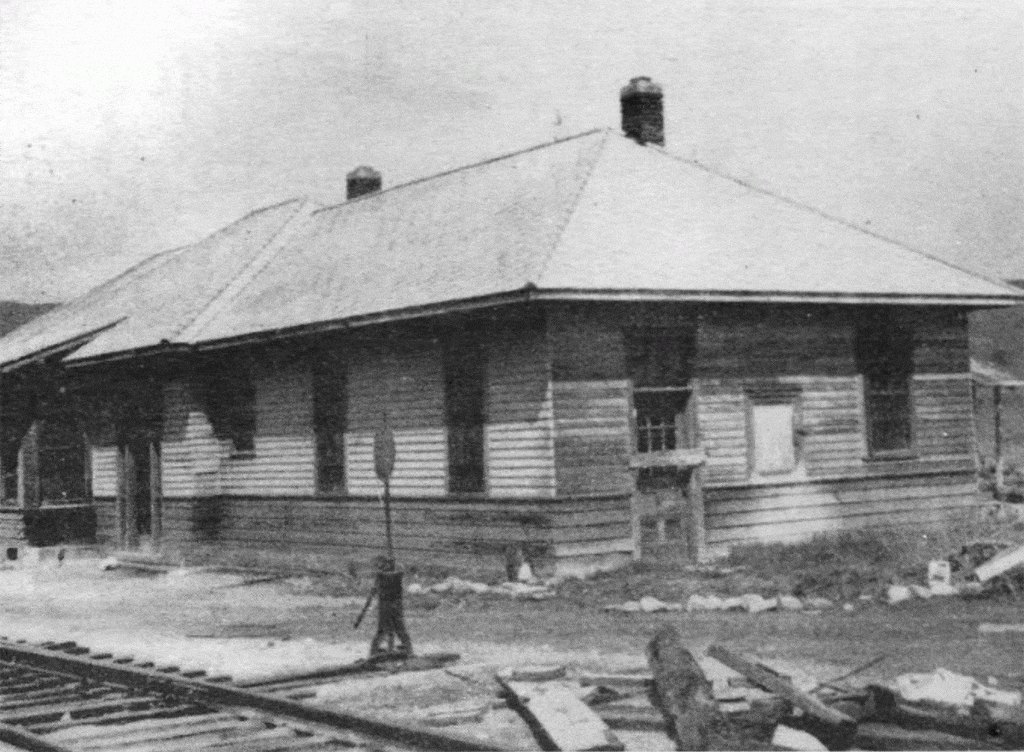
Credit: Park Record Digital Collection
“There were times we thought it was an impossible dream,” Mrs. Violet Terry, President of the Park City Senior Citizens, remarked in her dedicatory address for the new Senior Center on January 19, 1978.
Mrs. Terry expressed her deep appreciation to the many people who had contributed their time and effort over the past year to bringing the old 38 x 85-foot neo-Victorian style railroad depot fifteen miles from Keetley to Park City and restoring it into one of the most attractive buildings in town.
The Mountainlands Association of Governments, in what President Terry called a “God-send,” had given the Seniors a $6,000 grant from Federal funds which helped cover moving expenses, renovation, and furniture for the project.
Singling out project director Mr. Otto Carpenter for special recognition, Mrs. Terry called him “our mainstay.” She wanted to acknowledge his dedication. “He has worked for over a year and I don’t think there have been many days he hasn’t spent time in this building,” she added.
“We’ve put in a lot of time,” Carpenter noted.
Terry also pointed out that “the women have always been very cooperative,” raising money to help renovate the old depot through bingo games, yard sales, and raffles.
The large and impressive crowd of well-wishers agreed: the building would always be a memorial to the men and women whose hard work and sacrifices went into its “miraculous transformation.” Honored senior citizens from Park City present included: Nan McPolin, Mae Raddon, Justine and Howard Coleman, and Blanche Fletcher.
Born of sturdy pioneer stock, Mrs. Terry and Mr. Carpenter were no strangers to building something new. “We’re the type of people who get things done,” said Carpenter whose grandfather, John Lambert, was called by Brigham Young in the spring of 1861 to settle Rhodes Valley, now known as Kamas, Utah.
He built the first home there. John loved horses and raised cattle and sheep and ran a farm. Described as a kind and loving person, Lambert brought his wife and children, and his mother and brother to Utah in September of 1850 in the Lorenzo Young pioneer company. A stonemason, he worked on the Salt Lake City Temple after arriving in Salt Lake City.
Violet Terry’s great-grandfather, Daniel Alexander Sessions was among the 339 Mormon Battalion survivors who endured one of the longest and most torturous marches in military history. Twenty-two men died from disease or other natural causes during the grueling, 2,000-mile march from Council Bluffs, Iowa to San Diego, California in 1847. The Sessions family was one of the original 18 families to settle in the Heber Valley in the spring of 1859. These first settlers came into Wasatch County from Utah Valley and located a short distance north of present Heber City, Utah.
The President of the Senior Citizens also thanked Fay Dearden for making it possible to obtain the building. “This will always be a place of joy and a place of fun,” Dearden said.
Following the presentations, the visitors walked through the new Senior Citizens building and saw for themselves what hard work and determination can achieve. Make sure to utilize the Park City Museum’s Research Library to learn about other historic buildings and people, including your own home or business property or your Park City ancestors.